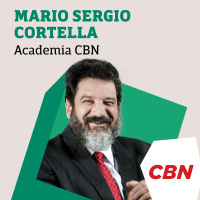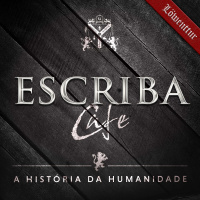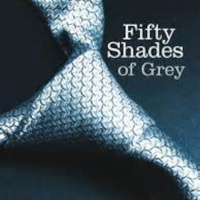Sinopsis
The podcast of Dr. Wilkinson's Music 271 lectures.
Episodios
-
4.27.07 (4.25.07 also in the feed)
01/05/2007Music 271: 4/27/07 (Last Day!)II: “Modern Jazz” or “Bebop”: A: Principal players:• Tenor Sax: Charlie Parker• Trumpet: John Gillespie (Dizzy Gillespie)• Piano: Thelonious Monk• Drums: Max Roach B: Harmonic and melodic inventions and their impact:• Music driven by improvisation, with minimal constraints on the performers (regulated jam sessions)• “Koko” - built upon the chords of a tune by British band leader Ray Nolan (Cherokee)• Standard of Improvisation• Stole a large portion of the Big Band audienceIII: Derivative jazz styles:A: Hard Bop (after 1955): remains the standard style of modern Jazz (Miles Davis, John Coltrane) B: Third Stream (after 1959): Mix of Jazz and Art musicC: Free Jazz (after 1959): led by Ornette Coleman, all elements of jazz should be improvised on the spot (similar to chance music by John Cage). 37-min long free jazz performance by 8 performersIV: Jazz-Rock Fusion (1969 - ):• British Invasion, Beach Boys, Bob Dylan were big on the rock scene• Fus
-
4.25.07
01/05/2007Music 271: 4/25/07I: The Blues: A: Form:• Solo vocalist accompanied by a guitar, small jazz ensemble, Big Band, guitar based ensembles, etc.• Sing the blues is to get rid of the blues• Most of the early singers were men from the south• 1920s: African-American women singers of the blues began their rise• Twelve-Bar Blues: Strophic forms usually in 5-6 stanzas (most vocal, at least one instrumental in many instances)• Three four-measure phrases: A - A’ - B• A: 2mm (I) + 2 mm (I) Singer → Instrument Call Response• A’: 2mm (IV) + 2mm (I)• B: 2mm (V) + 2mm (I)• Robert Johnson, Bessie Smith were among the first blues singers B: Role of call and response: C: The multiple opportunities for Signifyin’:II: Compositions surveying Jazz to c1945:• c1900-c1925: New Orleans Jazz• Outdoors: Parades• Celebratory Parades: (Political campaigns, Social clubs, Saints’ days, and other religious occasions)• Funereal Parades: (Dirges and hymns prior to internment, Jazz numbers after internment)• Dances: (Two-step (R
-
4.23.07 (Friday's lecture, 4/20/07, is also in the feed)
25/04/2007Music 271: 4/23/07II: Jazz: Overview of Style and History: (GB: p.81-82)• Blends European and West African traditions• Traceable to beginning of the 20th century• 2 periods:• Jazz as a functional music (c1900 - c1945):A: Chicago, Kansas City, New YorkB: New Orleans style (NOLA) (c1900 - c1930)C: Chicago style (NOLA style brought north) (c1920 - c1930)D: Swing (Big Band Jazz) (c1927 - c1945)• Jazz as an Art Music: (c1945 - Present)• New York was the center of innovations• Styles in Chronological order:A: Modern Jazz (c1945 - c1955)B: Hard Bop (c1955 - present)C: Free Jazz (c1959 - present)D: Fusion (Jazz Rock) (c1968 - present)E: Post-Modern mixtures (c1970s - present)• No single style of Jazz• Initially favored Band instruments (reeds, brass)• Importance of Improvisation (Signifyin’)• Distinct instrumental voice• Jazz swingsIII: The practice of Signifyin’: (GB: p.82)A: A definition: To use the language in a very personal and individualized way and to use the sound of your
-
4.20.07
25/04/2007Music 271: 4/20/07II: American Neo-Classicism concluded: Copland’s Piano Variations and beyond:• Copland, Elliot Carter were all Neo-Classic composers• Rhythmic aspects of early jazz (ragtime) till the 1920s• Tonal, clear textures: these all can be heard in Copland’s Piano Variations• Schönberg is a Neo-classical composers who uses serial harmonyIII: The Experimentalists (Ultra-modernists): Rejection of both post-Romanticism and Neo-Classicism:A: Henry Cowell and The Banshee (1925):• Neo-Classicism “Attempt to reduplicate a bygone style”• Introduced a new agenda: quest for new sonorities and timbres• The strumming of the piano strings become the new timbresB: Edgard Varese and Ionisation (1933):• Neo-Classicism is “Zealously academic”• Percussion is another source of new timbres and sonorities• Began the percussion ensemble tradition: was the first new piece that wasn’t transcribed from another sourceC: John Cage:• Inspired by Varese, composed works for percussion ensemble, solo percussion (brake drums)• “Dis
-
4.18.07
19/04/2007Music 271: 4/18/07I: Igor Stravinsky’s contributions to the formation of 20th-century art music: A: Second Stage Nationalist (to the beginning of WWI)1. The influence of Debussy on his ballet scores:• Collaborated with other Russian artist for a series of ballets made for Paris• Oiseau de feu (Firebird) - 1910• Petrushka - 1911• Le sacred u printemps (The Rite of Spring) - 1913• “The Nightingale” opera displays many Debussy influences from Nuages2. The Rite of Spring: and example of “Primitive Nationalism”:• Influenced by Russian composers (including Rimsky-Korsakov, his mentor)• Prompted a riot on its opening night• Based on Stravinsky’s dream about pre-Christian Russian community (Neolithic times). Virgin sacrifice brings about springtime• Represented a turning point for Stravinsky• Marked the ending of Post-Romanticism• 3 major political empires collapsed: Austro-Hungarian Empire, Ottoman Empire, Russian Empire (October Revolution)• Stravinsky fled to Paris foll
-
4.16.07
17/04/2007Music 271: 4/16/07I: Schönberg’s twelve-tone composition or Serialism (c1923-1951):• Logical use of all 12 pitches of the chromatic scale• Suite für klavier: Presents prime row right at the beginning and the top line• Note = length of time• Pitch = frequency• Prelude, Menuett, and Trio• His alternate row forms favor the tritone, one semitone below the P5II: Bartók and Stravinsky: their separate points of origin in 19th century European art music:• Bartók born in 1881: Went from Germanic nationalism for Hungarian nationalism• Stravinsky born in 1882: Abandoned nationalism for neo-classicism (and dabbled in serialism)• These two would change their direction as composers, unlike SchönbergIII: Bela Bartók’s multi-faceted career and its legacy: A: Four major roles:1. Virtuosic pianist: Educated to be a concert pianist and composer;2. Ethnomusicologist: One of the first scholars to collect music of a tradition outside the realm of European art music (Hungary and Slavic Europe) (B
-
4.9.07
14/04/2007Music 271: 4/9/07II: Claude Debussy (1862-1918): → Stravinsky → French Composers (Poulenc) A: Education:• Paris Conservatory• Captivated by music of Wagner B: Changing attitude concerning Richard Wagner• Began to separate from Wagner’s music in the late 1870s and 1880s• Franco-Prussian War raised desire for a French musicC: Evolving approach to musical composition: Tonality and form → moving to greater equality of importance of the five elements of the musical language:• I - related key - I• Used patterns of sound, texture, timbre rather than chords for a harmony• Harmony, Melody, Rhythm, Texture, Timbre: Musical element hierarchy 19th Century• 20th Century: All musical elements become equal
-
4.13.07
14/04/2007Sorry for the delays this week! This week has been absolutely crazy, and getting this podcast out has taken a back burner to many other things. Please look in the feed for the other lectures from this week. (4/9 and 4/11)Music 271: 4/13/07I: Arnold Schönberg (1874-1951): A new approach to harmonic organization prompted by an essentially conservative philosophy:• Believed he was the heir to a great musical tradition: Art music as cultivated in Vienna• Harmonic order of Central Europe (Vienna) was being overwhelmed by chromaticismII: Schöenberg’s career: Two stages and three concepts of harmony: (GB: p.73, Bonds Ch.21) A: Diatonic chromaticism in the style of Wagner, Mahler, and Brahms (to 1907):• “Transfigured Night” - 1890s B: Atonality - no tonic and no alternative harmonic organization (1907-c1923):• All 12 chromatic pitches have equal weight• Expressionism - musical compositions as well as visual arts and theatre• Expressionism: refers to art that takes an inner psychological reality
-
4.11.07
14/04/2007Music 271: 4/11/07II: Claude Debussy (1862-1918): Evolving approach to musical composition: tonality and form:• Short and simple motives, developed in a harmonically ambiguous environment• 20th century approach to harmony and melodyIII: Charles Ives (1874-1954):A: Organization of Crawford’s discussion:• Prologue - recap about the sacrilization of art music in America• Biography of Ives - profound impact of his father on his life (father died when Ives was 19)• Art Songs -• Instrumental Music -• Most celebrated American composer of art music• Very complicated individual (emotionally and psychologically)• Life insurance salesman - Estate planning is accredited to him• Compositional activities only took up about 20 years of his life• Rest of his life spent encouraging performance of his works and supporting other younger composers• Leonard Bernstein helped draw public attention to the composers works• B: Distinctive characteristics of Ives:• Ongoing and continuous memoria
-
4.2.07
05/04/2007Music 271: 4/2/07II: The post-Romantic Period and the turn towards the 20th century: the generation of 1860:• Hard to differentiate the Nationalistic composition and composer• Beginnings of another break: divide between composers born before and after 1860:• Hugo Wolf, Gustav Mahler, Eduard MacDowell, Claude Debussy, Horatio Parker, Richard Strauss, Jean Sibelius, Amy Cheney Beach, Scott Joplin: all born in the decade of 1860• Mahler, Debussy, and Joplin were all prophetic• Strauss: Symphonic poems, Opera, Art songs• Mahler - Schoenberg - Weber (evolution)• Ragtime was first form of New Orleans JazzIII: Gustav Mahler (1860-1911): A: Biographical Sketch1. Polka mit einem Trauermarsch als Einleitung (Polka with a funeral march as introduction): Composed at age 5: Composed after the subsequent deaths of 2 of Mahler’s brothers• Born in Czech Republic (Bohemia)• Dysfunctional family• Direct and indirect references to death (Mahler 1 as an example)• 1880’s found Mahler in Vienna Conservatory• Mentors were 4 individ
-
3.21.07
21/03/2007Music 271: 3/21/07II: The concept of program music of the Romantic and Post-Romantic periods: A: Differences between the SP (Symphonic Poem) and Character piece:• Similar to Photograph vs. Film• CP invite image without a story, SP creates a story• Both assume an extra-musical role• Berlioz, Liszt, Smetana, Strauss, Sibelius were all examples of programmatic composers B: Criticism of the Concept of Program Music:1. Robert Schumann (1835): wrote a critical essay about Symphonie Fantastique (1829, Germany: mid-1830s)2. Eduard Hanslick (1854: published an essay “Vom musikalischen Schönen” in 1854• Ideas which a composer expresses are mainly and primarily of a purely musical nature.• Definite feelings and emotions are not capable of being embodied in music.C: Putting this to the test: two orchestral compositions and the evidence of their composers’ expressive intentions:
-
3.19.07
21/03/2007Music 271: 3/19/07II: Post-Romanticism in Europe, c1850-1914 (Start of WWI): A: The break down of the previous consensus concerning musical style:• Historical period = consensus concerning music (performance practices, purpose, etc.)• GB p. 30• 2 conflicting perceptions of place and purpose in music:• Germanic Romanticism vs. Nationalism B: The Emergence of European Nationalism• Has continued to present day• No one nation sets the standard anymore• Reaction to political and cultural domination by Germany over Central Europe• Italy and Central Europe were primary areas before WWI• Reaction to the power structure in Europe (Bonds p. 385)• Music that was based upon the composers vision of his/her society/history/culture/values/literature in the composer’s first language• New compositions emerging based on subject material from the composers region• Dance rhythms are one way in which Nationalism can be expressed• GB p. 62, Bonds p. 494, 491III: The concept of program mu
-
3.16.07
18/03/2007Music 271: 3/16/07II: The preservation of African values in the US: “Yonder Come Day”: • Bessie Jones - Lived on St. Simon’s Island, GA• Was the new Music Master in the new world (African drum masters)• Documentary Ideas:• Everyone was responsible for preserving the culture• Game Songs• Call & Response practice bought everyone into music making• Functionality - Each job has a song to take up the boredom or pain• Central role of religion in preserving culture• When deprived of their drums, Ms. Bessie ancestors devised “Drum substitutes” (Clapping, “Hambone”, Tambourine)
-
3.14.07
15/03/2007Music 271: 3.14.07II: The evolution of African-American Christianity in resistance to white oppression: The Spiritual:• “Steal Away” - Night worship service was to be held OR Some slaves were going to an attempt an escape• “Joshua fit the Battle of Jericho” - displayed the slaves longing for freedom• “Go Down Moses” - Sung when it became apparent that the Confederacy would lose the war, and Union troops were setting slaves free (1862-63)• 1864-1865 - Celebratory spirituals (Free At Last)• “Yonder Come Day” - evening worship was drawing to a closeIII: African Sacred Dance adapted to Christianity: The Ring Shout: (GB p. 67)• Ring Shout - African sacred dance (CCW direction circle dance)• Conducted at night in “praise houses”• “Run, Old Jeremiah” - recorded 1934 in Jennings, Louisiana (sung by Joe Washington and Austin Coleman)
-
3.12.07 (Fast forward a bit to start the lecture)
12/03/2007Music 271: 3/12/07II: The Acculturative Process: African-American adaptations of European traditions and instruments: A: The simultaneous preservation of African musical practices and values:• “Turkey in the Straw” - Fiddle tune fondly remembered by former slaves B: African-American musical activity during the ante-bellum period: why was the violin so appealing (Part II): (GB p. 63-64)• Fiddle is capable of playing music from the West African traditions• Possible for a fiddler to swing, play blue notes• Africans had a bowed string instrument back in their homeland (Called: Gonje, Goge, Riti)• Used to waken the chief, alert the village etc.• Fiddle = 4-stringed gonje from the African viewpoint C: Returning the favor: black influences upon white music in the southern Appalachians:• Blacks taught the whites how to play the fiddle more rhythmically than previously• Documentary notes:• First encounter of a fiddle by a white Appalachian• Meeting point for cultures• Ballad of J
-
Podcast only
09/03/2007Music 271: 3.9.07There is only a podcast today because I had to attend the bassoon candidate master class. I apologize.
-
2.28.07
01/03/2007Music 271: 2/28/07II: Continued discussion of the cultivation and sacralization of European Art music in post-Civil War America: A: The role of Upper-Middle Class Elites in cultivating E.A.M:• John Sullivan Dwight - 1852-1881 established Dwight’s Journal of Music• Dwight believed in the superiority of Central European Art Music• Cultivated music - music that has been imported by another culture• Modern Applications - 1911: NY Philharmonic received $1M only if they featured the donor’s favorite composers in their concerts• Elites used Art Music as a way to separate themselves from the immigrants• Patronized orchestras and opera companies• “Art music is not for everyone” - Theodore Thomas• Social status and elitism are the result of European Art Music B: Statistical evidence of the privileged place of Germanic orchestral music:• More than 50% of music played in the early 20th-century was Austro-Germanic in origin C: The Concept of Nationalism: Temperley’s Theory of its evolution: (GB p. 62)• Nationalism - asser
-
2.26.07
27/02/2007Music 271: 2/6/07II: The establishment in the US of European Art Music at the top of a musical hierarchy: “The sacralization of European Art Music: (Crawford Ch. 15) A: Four Major developments between the end of the Civil War and the beginning of WWI: • Establishment of conservatories of music (Modeled after Central European schools) 1. Oberlin Conservatory (1865) 2. New England Conservatory, Cincinnati, Chicago Academy of Music (1867) 3. Peabody Conservatory (1868) 4. New York College of Music (1878) 5. National Conservatory of Music (1885) 6. Institute of Musical Art (1905) - merges into Julliard School of Music (1926) • Concert halls and theatres 1. 1857: Academy of Music, Philadelphia 2. 1878: Cincinnati’s Music Hall 3. 1882: The Metropolitan Opera House 4. 1889: Chicago’s Auditorium 5. 1891: Carnegie Hall 6. 1900: Symphony Hall in Boston • Formation of
-
2.23.07
23/02/2007Music 271: 2/23/07II: Richard Wagner (1813-1883): his philosophy concerning operatic expression: • Had visions of a new music drama • Based upon the clarified elements of opera as he saw themIII: Wagner’s conception of the Gesamtkuunstwerk* and the role of the orchestra: (GB p.59) (Bonds p. 474) • Orchestral material must focus the attention on the characters of the opera and their dramatic situation • Orchestra must also suggest to the audience the character’s emotions even when the character has not expressed them yet A: The purposes of the Leitmotif (Plural: Leitmotiven) (Leit = to lead) • Small musical but recognizable melodic/harmonic unit with a distinct rhythm • Can be sung or played B: Representative Leitmotiven in Tristan und Isolde • The love potion leitmotif - first seen in mm. 1-40 of the prelude • Act I, Scene 5: The motiv is defined by the text: Isolde: “Ich trink zu dir” • Act II, Scene 1: Implications of the love potion’s effect on Isolde: the mo
-
2.21.07
21/02/2007Music 271: 2/21/07II: German Opera: (Bonds p. 469) A: From Mozart to Weber • Early German operas had Italian texts (Mozart and Haydn) • Mozart composed 2 Germanic operas (Abduction from the Seraglio (1782) & The Magic flute (1791)) • Beethoven’s Fidelio (1814) B: Karl Maria von Weber: Biographical Sketch • Born in 1786 and died in 1826 • Composed 3 Operas (Euryanthe (1823) & Oberon (1826)) • Known for instrumental music as well • Was primarily a conductor in Prague and Dresden C: Der Freischütz: The First German Romantic Opera • Completed in 1820, 1st performed in 1821 1. Romantic Elements (GB p. 58) • Conflict between good and evil - Good prevails • Role of Nature • Supernatural elements • Redemption of the hero by the heroine’s prayers and self-sacrifice 2. Sources of Unity • How to transform t














